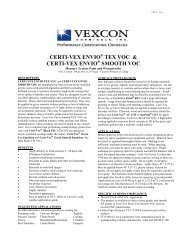Protectosil® CIT technical datasheet
Protectosil® CIT technical datasheet
Protectosil® CIT technical datasheet
Create successful ePaper yourself
Turn your PDF publications into a flip-book with our unique Google optimized e-Paper software.
Protectosil ® <strong>CIT</strong><br />
CORROSION INHIBITOR TREATMENT<br />
Product Data and Test Information<br />
LOW<br />
VOC’S<br />
PRODUCT NAME<br />
Protectosil ® <strong>CIT</strong><br />
Advanced organofunctional corrosion inhibitor treatment<br />
for steel-reinforced concrete.<br />
MANUFACTURER<br />
Evonik Degussa Corporation<br />
379 Interpace Parkway, P.O. Box 677<br />
Parsippany, NJ 07054-0677<br />
1 (800) 828-0919<br />
info.protectosil@evonik.com<br />
www.protectosil.com<br />
PROTECTOSIL PRODUCTS ARE MANUFACTURED AT<br />
THE EVONIK DEGUSSA CORPORATION THEODORE,<br />
ALABAMA, PLANT AND THE EVONIK INDUSTRIES<br />
GMBH PLANT IN RHEINFELDEN, GERMANY, UNDER A<br />
QUALITY SYSTEM CERTIFIED TO ISO-9001 AND<br />
ISO-14001 REQUIREMENTS.<br />
PRODUCT DESCRIPTION<br />
A surface-applied clear liquid that penetrates concrete and<br />
provides an organofunctional molecule to inhibit the electrochemical<br />
corrosion process between the rebar and the chloride<br />
ions, and oxygen and moisture within the concrete.<br />
APPROPRIATE APPLICATIONS<br />
• Steel-reinforced cast-in-place, precast, post tension,<br />
GFRC, prestressed or other steel-reinforced concrete<br />
• Parking decks, facades, balconies, walkways, piers,<br />
bridge decks, beams, columns and other steel-reinforced<br />
concrete structures<br />
• Marine environments with high relative humidity and<br />
areas where deicer salts are used<br />
ADVANTAGES<br />
Protectosil <strong>CIT</strong> dramatically decreases both mat-to-mat<br />
(>90%) and microcell (>87%) corrosion currents.<br />
Corrosion, µA<br />
450<br />
400<br />
350<br />
300<br />
250<br />
200<br />
150<br />
100<br />
50<br />
0<br />
Total Corrosion Mat-to-Mat Microcell<br />
Protectosil ® <strong>CIT</strong><br />
Untreated<br />
Protectosil <strong>CIT</strong>:<br />
• Dramatically reduces the chloride-ion-induced corrosion<br />
rate of concrete steel reinforcement<br />
• Reduces corrosion in carbonated concrete steelreinforced<br />
structures<br />
• Is an easy-to-use treatment that penetrates the concrete<br />
and chemically bonds with steel, cement paste and other<br />
siliceous material<br />
• Will not discolor or change the substrate’s surface<br />
appearance or surface friction<br />
• Effectively inhibits macrocell (mat-to-mat) and microcell<br />
(along rebar) corrosion of steel-reinforced concrete<br />
• Mitigates corrosion of rebar even in structures subjected<br />
to an environment with high relative humidity<br />
• Repels additional water and chloride ions<br />
As the chart above shows, the proprietary organofunctional<br />
chemistry of Protectosil <strong>CIT</strong> can greatly reduce corrosion<br />
currents. This is done chemically by interrupting the<br />
electrolytic current and causing a slowdown of the corrosion<br />
process.<br />
The corrosion process in steel-reinforced concrete is<br />
spontaneous and similar to the process in a galvanic cell<br />
or battery. The electrochemical reactions can be described<br />
as follows:<br />
Fe ++ + 2Cl - FeCl 2<br />
FeC1 2 + H 2 O + OH - Fe(OH) 2 + H + + 2Cl -<br />
2Fe(OH) 2 + 1 ⁄ 2 O 2 Fe 2 O 3 + 2H 2 O anode<br />
1⁄ 2 O 2 + H 2 O + 2e - 2 OH - cathode<br />
(Continued)
In the corrosion process, ferrous oxide (rust) takes up more<br />
volume than the original steel and causes stress on the<br />
concrete. This stress manifests itself as cracks, spalls and<br />
delaminations in the concrete structure. But the main<br />
consequence of concrete corrosion is the loss of steel cross<br />
section and the resulting loss of structural capacity. The<br />
three main factors affecting the corrosion rate are the<br />
concentrations of chloride ions, moisture and oxygen. Other<br />
factors, such as temperature, also contribute to the speed of<br />
the corrosion process. Warm, humid environments, such as<br />
coastal areas, accelerate the corrosion process and cause<br />
very rapid deterioration.<br />
Protectosil <strong>CIT</strong> works on the molecular level to<br />
effectively inhibit the electrochemical interaction of<br />
the corrosion process. This advanced inhibiting action<br />
makes Protectosil <strong>CIT</strong> the best choice for difficult<br />
applications.<br />
Applied to concrete structures repaired with polymer<br />
concrete, Protectosil <strong>CIT</strong> can equalize the differences<br />
in electrochemical potential between the polymer concrete<br />
and the existing concrete.<br />
The product:<br />
• Inhibits corrosion of carbon and galvanized steel rebar<br />
• Is effective in both marine and high-humidity<br />
environments<br />
• Is easy to apply<br />
• Is effective in heavily chloride-contaminated concrete<br />
• Is effective in carbonated concrete<br />
• Complies with VOC regulations<br />
• Is vapor permeable<br />
• Dries quickly<br />
• Prevents ingress of additional chlorides<br />
TECHNICAL DATA<br />
Protectosil <strong>CIT</strong> is a proprietary liquid organofunctional<br />
material.<br />
Color<br />
clear to slightly amber<br />
Corrosion Current, µA<br />
Corrosion Current (µA)<br />
700<br />
600<br />
500<br />
400<br />
300<br />
200<br />
100<br />
0<br />
Start<br />
Effectiveness of Protectosil <strong>CIT</strong> at Various<br />
Levels of Internal Concrete Relative Humidity<br />
500<br />
400<br />
300<br />
200<br />
100<br />
0<br />
Wetting - 2 weeks<br />
Wetting - 17 weeks<br />
Drying - 15 weeks<br />
40 50 60 70 80 90 100<br />
Concrete’s Internal Relative Humidity (%)<br />
Untreated concrete - increase in corrosion during<br />
wetting cycle<br />
Untreated concrete - decrease in corrosion during<br />
drying cycle<br />
Protectosil ® <strong>CIT</strong> during wetting cycle<br />
Effectiveness of Protectosil <strong>CIT</strong> on Heavily<br />
Corroding Reinforced Concrete<br />
Corrosion Currents During Salt Water Exposure Cycle,<br />
Before and After Protectosil <strong>CIT</strong> Application<br />
Before<br />
Protectosil ® <strong>CIT</strong><br />
Application<br />
After<br />
Protectosil ® <strong>CIT</strong><br />
Application<br />
50 100 150 200 250 300 350 400<br />
Time, Days<br />
The testing shown above consisted of steel-reinforced<br />
concrete slabs exposed to weekly cyclic salt water exposure.<br />
Once the slabs reached a high level of corrosion, Protectosil<br />
<strong>CIT</strong> was applied. The Protectosil <strong>CIT</strong> treatment reduced<br />
the total corrosion current by more than 90%.<br />
Effectiveness of Protectosil <strong>CIT</strong> on<br />
Concrete Resistivity<br />
Density 0.88 g/cm 3<br />
pH 7 to 8<br />
Flash Point 63°C (145°F)<br />
Viscosity 0.95 mPa s<br />
VOC<br />
PROTECTOSIL <strong>CIT</strong> EFFECTIVENESS ON FHWA<br />
CRACKED BEAM CONCRETE<br />
The Federal Highway Administration has developed testing<br />
protocol for evaluating inhibitors and coated rebar in<br />
aggressive corrosion environments. The testing is carried<br />
out under 48 weeks of cyclic salt water ponding (15% salt),<br />
high relative humidity (70% to 80%) and elevated<br />
temperatures (100°F). To make the test more realistic,<br />
the test specimens were cracked along the length of the<br />
reinforcement to simulate transverse bridge deck<br />
cracking. The results are illustrated in the chart below<br />
and summarized as follows:<br />
Cracked concrete,<br />
no preexisting corrosion:<br />
Cracked concrete,<br />
existing corrosion:<br />
Current, µA<br />
99% reduction of<br />
corrosion compared to<br />
untreated specimens<br />
92% reduction of<br />
corrosion compared to<br />
untreated specimen<br />
Effectiveness of Protectosil ® <strong>CIT</strong> on Active Corrosion<br />
600<br />
500<br />
400<br />
300<br />
200<br />
100<br />
Slabs treated with <strong>CIT</strong><br />
0<br />
0 1 5 10 15 20 25 30 35 40 45 48<br />
Time, Weeks<br />
Untreated<br />
Protectosil ® <strong>CIT</strong><br />
Effectiveness of Protectosil <strong>CIT</strong> on Chloride Ion Screening<br />
After Accelerated Weathering by ASTM G 85 and ASTM D4587<br />
Chloride Ion Screening, %<br />
100<br />
80<br />
60<br />
40<br />
20<br />
0<br />
One Coat Two Coats Three Coats<br />
Applications of Protectosil ® <strong>CIT</strong><br />
CONCRETE REPAIRS<br />
All delaminated, loose or spalled concrete must be removed<br />
and repaired. Shrinkage cracks that are dormant, shallow in<br />
depth and lacking structural significance can be treated with<br />
a multiple-coat application of Protectosil <strong>CIT</strong>. Other cracks<br />
should be routed, treated with Protectosil <strong>CIT</strong> and then<br />
sealed with a suitable sealant. Protectosil <strong>CIT</strong> does not<br />
affect the adhesion of most sealants to concrete or that of<br />
concrete to rebar. Protectosil <strong>CIT</strong> may be applied directly<br />
to the cleaned rebar prior to placing repair material.<br />
SURFACE PREPARATION<br />
Concrete surface must be cleaned to remove all traces of<br />
dirt, dust, efflorescence, mold, grease, oil, asphalt, laitance,<br />
paint, coatings, curing compounds and other foreign<br />
materials that would inhibit penetration. Acceptable<br />
cleaning methods include shotblasting, sandblasting,<br />
waterblasting, grinding and chemical cleaning. Check with<br />
your Protectosil representative to verify that surface<br />
preparation is adequate.<br />
INSTALLATION<br />
Apply multiple coats of Protectosil <strong>CIT</strong> to entire concrete<br />
surface, including repaired areas. Allow a minimum of<br />
15 minutes between coats (or until visibly dry). Most<br />
applications require two or three coats at 175 to 225 ft 2 /gal<br />
(230 to 180 ml/m 2 ) for each coat. The exact amount of<br />
Protectosil <strong>CIT</strong> will depend on the present corrosion rate,<br />
the chloride ion level and the service environment of the<br />
structure. Check with your Protectosil representative to<br />
confirm exact number of coats and coverage rate for your<br />
particular project.<br />
Protectosil <strong>CIT</strong> should be applied to concrete using lowpressure<br />
pumping equipment with a wet fan type spray<br />
nozzle. Alternate methods include roller, brush or pouring<br />
(in crack for example). Do not alter or dilute the material.<br />
Do not apply to a wet or damp substrate.<br />
APPLICATION CONDITIONS<br />
The proper application conditions are between 40°F and<br />
100°F (5°C to 38°C). Lower or higher application<br />
temperatures require prior written approval from our<br />
<strong>technical</strong> service department. Do not apply if rain is<br />
expected within 4 hours following application, or if high<br />
winds or other conditions prevent proper application. The<br />
substrate should be as dry as possible prior to application.<br />
Depending on weather conditions, allow between 24 and<br />
72 hours for the substrate to dry after rain or cleaning<br />
with water.<br />
Precautions: Please read the Protectosil <strong>CIT</strong> material safety<br />
data sheet for detailed information. Keep containers away<br />
from heat, sparks, open flame and other sources of ignition.<br />
Protectosil <strong>CIT</strong> containers should be kept closed when<br />
not in use and should be stored at temperatures between<br />
0°F and 120°F (-18°C and 50°C), away from rain and<br />
standing water.
WARRANTY<br />
Evonik Degussa Corporation offers a corrosion control<br />
warranty for the proper application of Protectosil <strong>CIT</strong>. The<br />
warranty is based on maintaining the steel corrosion current<br />
in a low-corrosion or passive state. Corrosion rates are<br />
determined by linear polarization devices verified as<br />
accurate by independent researchers. The time period<br />
covered by the warranty depends on the present corrosion<br />
rate, the service environment and the steel reinforcement<br />
orientation. Contact your Protectosil representative for a<br />
complete evaluation of your structure.<br />
AVAILABILITY<br />
Protectosil <strong>CIT</strong> is available in 5- and 55-gallon drums (20 and<br />
210 liters) to approved applicators, F.O.B. to various warehouses<br />
throughout the United States, Canada and Mexico.<br />
Contact us at 1 (800) 828-0919 for the sales representative in<br />
your area.<br />
For more information, MSDS and the most updated product information, and to find your local representative, go to www.protectosil.com.<br />
Protectosil ® = registered trademarks of Evonik Industries.<br />
This information and all <strong>technical</strong> and other advice are based on Evonik Degussa Corp's ("Evonik") present knowledge and experience. However, Evonik assumes<br />
no liability for such information or advice, including the extent to which such information or advice may relate to third party intellectual property rights. Evonik<br />
reserves the right to make any changes to information or advice at any time, without prior or subsequent notice. EVONIK DISCLAIMS ALL REPRESENTATIONS<br />
AND WARRANTIES, WHETHER EXPRESS OR IMPLIED, AND SHALL HAVE NO LIABILITY FOR, MERCHANTABILITY OF THE PRODUCT OR ITS FITNESS<br />
FOR A PARTICULAR PURPOSE (EVEN IF EVONIK IS AWARE OF SUCH PURPOSE), OR OTHERWISE. EVONIK SHALL NOT BE RESPONSIBLE FOR<br />
CONSEQUENTIAL, INDIRECT OR INCIDENTAL DAMAGES (INCLUDING LOSS OF PROFITS) OF ANY KIND. It is the customer's sole responsibility and<br />
obligation to arrange for inspection and testing of all products by qualified experts. Reference to trade names used by other companies is neither a recommendation<br />
nor an endorsement of the corresponding product, and does not imply that similar products could not be used.


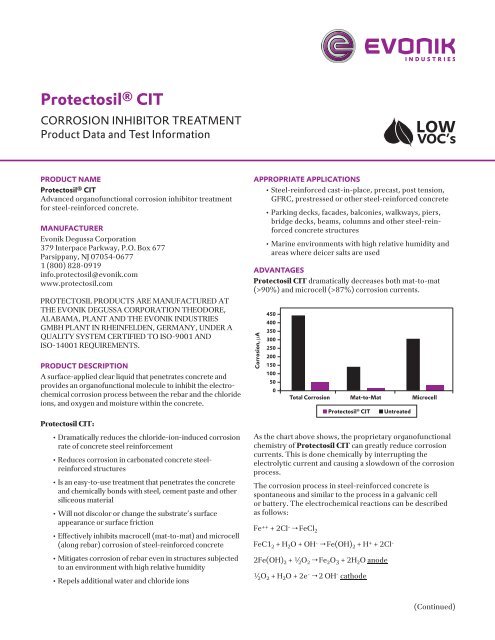
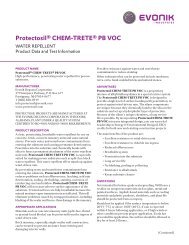
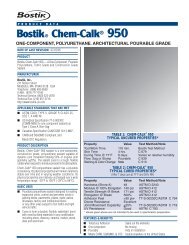
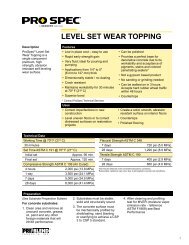
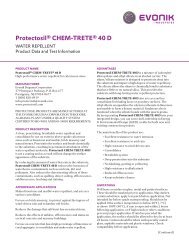
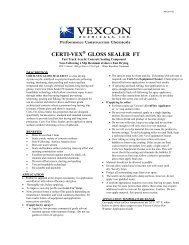
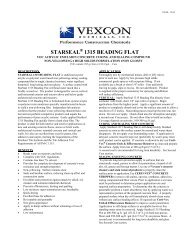
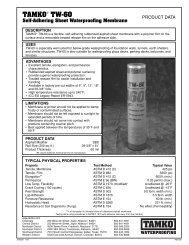
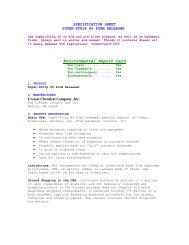
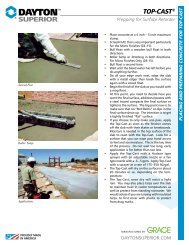
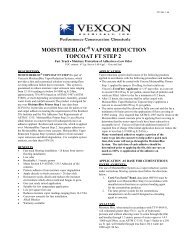
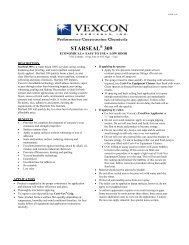
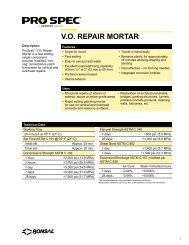
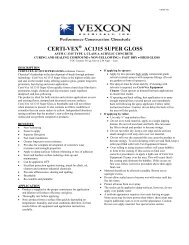
![sheets/Data sheetsVB6_Spec[1].pdf - Sweeney Materials](https://img.yumpu.com/38180404/1/190x245/sheets-data-sheetsvb6-spec1pdf-sweeney-materials.jpg?quality=85)
